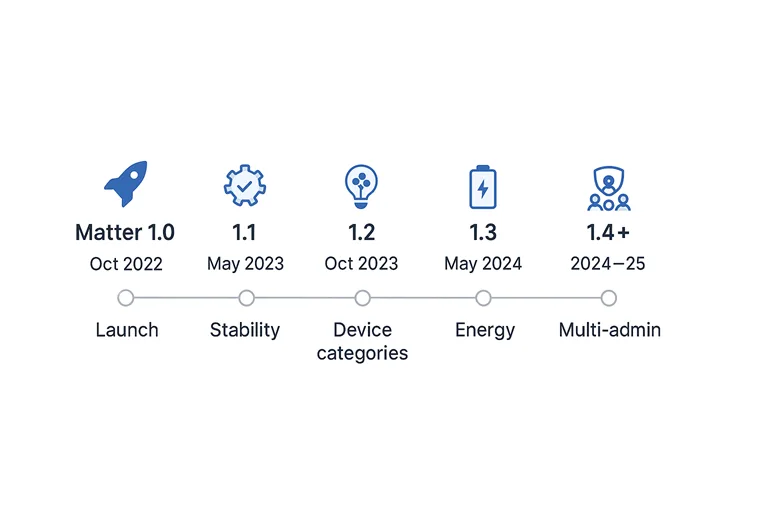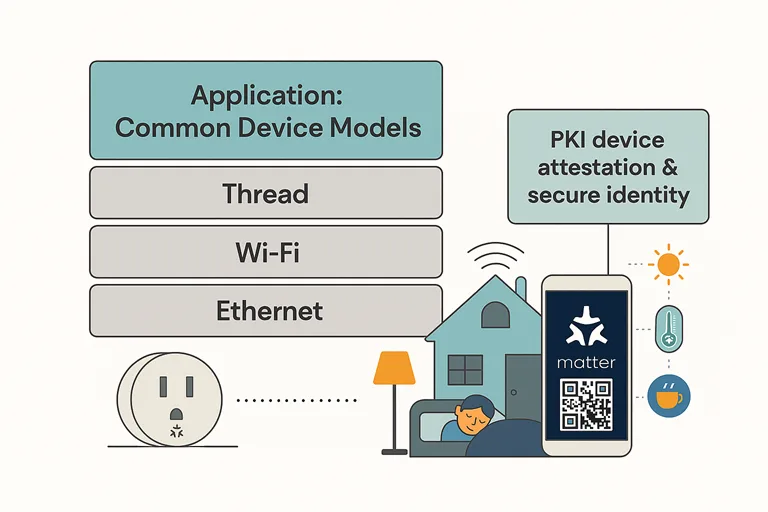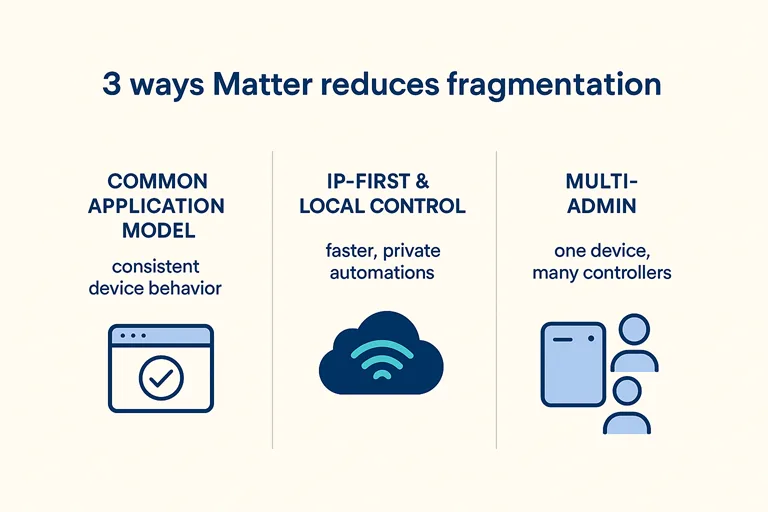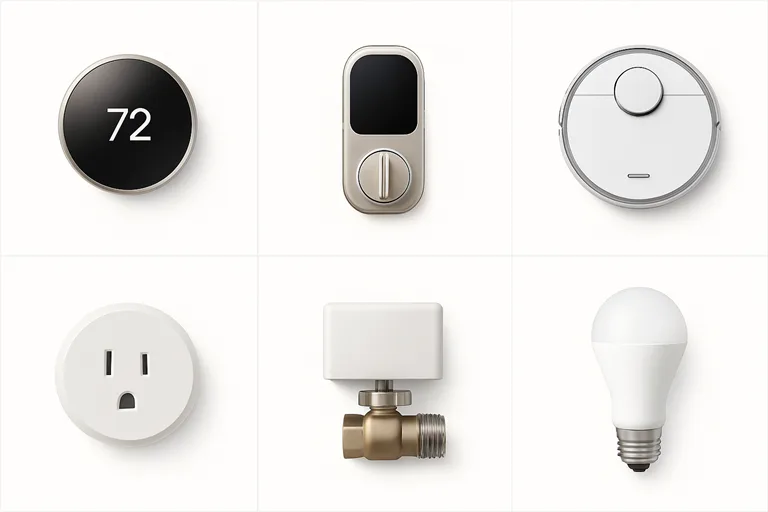Now, consider this: You’re standing in your kitchen with a phone in one hand and you’re toggling between three separate apps to dim the smart lights, disarm the Wi-Fi-connected camera-equipped alarm, and let your internet-of-things thermostat know that actually no, it doesn’t need to keep fighting with the window AC. That splintered flow — multiple apps, disparate hubs, varying voice replies — is what most people refer to when they gripe about smart home fragmentation. It is real, it is recurring and it costs time, trust,and excitement.
Enter Matter: an IP-based standard designed to allow devices from different manufacturers to be controlled in a consistent way across platforms, and to make setup, control and security easier.
- Quick background & timeline — What Matter is, and how it evolved
- How Matter actually works
- How Matter can end fragmentation — mechanisms & practical implications
- Evidence of progress — who’s shipping what and how fast
- Why fragmentation still remains — realistic roadblocks and common misconceptions
- What consumers can (and should) do now — a practical checklist
- What manufacturers & platforms must do next — a short roadmap
- FAQs
- Conclusion
Quick background & timeline — What Matter is, and how it evolved
Matter evolved from Project CHIP and is administered by the Connectivity Standards Alliance (CSA), a standards organization with extensive roots in the smart-home ecosystem. The goal was straightforward: provide an open, IP-first application layer that eliminates protocol translation while enabling uniform device behavior across ecosystems.

The standard has evolved in clear steps. The initial public release, Matter 1.0, arrived in late 2022 with a basic set of device types and commissioning flows. Subsequent versions expanded device categories and improved onboarding and features: Matter 1.2 added multiple household categories such as robotic vacuums and smoke/CO alarms, Matter 1.3 introduced energy and EV-related types, and minor releases like Matter 1.4.1 brought improvements that simplify setup (for example, NFC tap-to-pair and multi-device QR onboarding). These milestones matter because they demonstrate incremental, standards-driven progress rather than a single “big bang.”
How Matter actually works
At its core, Matter is an application-layer protocol built on top of IP (that is, it uses the same network layer that powers the internet). That design choice is purposeful: IP-based devices can interoperate more directly with modern routers and cloud or local controllers, removing much of the need for protocol bridges. The academic review and the CSA documentation both emphasize that IP eliminates many translation bottlenecks that previously required vendor-specifihttps://csa-iot.org/all-solutions/matter/c hubs.

From a transport perspective, Matter uses Wi-Fi, Ethernet, and Thread for device connectivity, and Bluetooth Low Energy (BLE) for secure commissioning during setup. Security is not an afterthought: Matter employs a PKI-style attestation model and cryptographic device identities so controllers can trust the device and its firmware. Because device types are standardized into common application models (for example, a thermostat exposes a predictable set of controls), controllers don’t have to guess the meaning of a given data field — reducing inconsistent behavior across ecosystems.
Finally, multi-admin support means a single device can be controlled by multiple ecosystems (for example, an item can be visible to both a HomeKit controller and a Google Home controller) without repeated re-provisioning. In short, the protocol stack and the certification model together are designed to address the root causes of fragmentation.
How Matter can end fragmentation — mechanisms & practical implications
To understand how Matter turns frustration into freedom, map these technical mechanisms to everyday outcomes.

First, the common application model ensures that devices expose consistent controls and state across controllers. Practically, this means your thermostat won’t offer “mode A” on one platform and “mode B” on another; basic capabilities should map the same way. That consistent model directly reduces the mental overhead of learning multiple vendor UIs.
Second, because Matter is IP-first, devices on Thread and Wi-Fi can participate in local automation without constant cloud back-and-forth. Low latency and reliability improve, and local automations survive internet outages. That’s why recent vendor moves to enable local control for Matter on smart hubs are important: they lower latency and improve privacy because less user data needs to traverse the cloud.
Third, multi-admin enables multiple controllers to manage the same physical device. This addresses one of the most user-visible pain points: re-pairing a device every time you switch controllers. It also supports shared homes where different family members prefer different assistants.
Fourth, certification and a Distributed Compliance Ledger (DCL) create verifiable device identities and expected behaviors. While certification doesn’t guarantee every advanced vendor feature will be present across all controllers, it does set a minimum interoperability bar — an essential first step in reducing fragmentation at scale.
Evidence of progress — who’s shipping what and how fast
Theory is necessary, but adoption is the acid test. The CSA maintains a product registry and reports rapidly growing certification numbers; reporting at different times has documented several hundred to over seven hundred certified devices in early rollout phases, with numbers continuing to climb. That growth shows manufacturers are investing in certification rather than ignoring the standard. For the canonical list of certified products and the latest counts.

Vendor case studies matter for real users. Aqara, for example, announced support for dozens of additional Matter device types, and its approach to advanced bridging shows one practical path for vendors to expose complex, proprietary features (such as facial recognition or virtual sensors) while still participating in the Matter ecosystem. That kind of hybrid strategy helps bridge legacy ecosystems to Matter-enabled controllers without forcing users to throw away functional devices.
Major platform vendors have also taken visible steps. Recent coverage highlights that companies like Google, Apple, Amazon, and Samsung have made public commitments or technical moves to integrate Matter into their ecosystems — including local-control improvements and new onboarding flows — which lowers friction for consumers adopting cross-vendor setups. These vendor implementations are not universal feature-equality guarantees, but they are meaningful adoption signals.
Why fragmentation still remains — realistic roadblocks and common misconceptions
Despite its potential, Matter has not instantly eliminated fragmentation. Several factors create a gap between protocol capability and real-world experience.
One major reason is partial implementations. Vendors can implement the Matter spec selectively: they might support essential controls but not every advanced capability their own product supports. Customers get inconsistent experiences when switching between controllers as a result of this inadequate compliance. These real-world inconsistencies are documented in consumer and industry press reports and analysis.
A second friction is certification cost and timelines. Achieving certification requires testing, firmware adjustments, and sometimes hardware rework. For legacy devices without over-the-air update capacity, manufacturers may need to issue bridges rather than native Matter firmware. A mixed ecosystem may be prolonged if smaller manufactures choose to delay or opt out of certification, which is not free. Developer literature from chipset and vendor platforms emphasizes the complexity and cost required for complete compliance.
Third, platform UX and product decisions may re-establish fragmentation. Even if a device follows the common application paradigm, distinct controllers may decide which features to highlight and how to present them in the UI. In short, protocol-level compatibility does not automatically yield identical user experiences. Editorial analyses and field reports have repeatedly called this out as a practical limitation.
Finally, resource-constrained devices and existing hubs may continue to require bridging. Many low-power sensors were designed for Zigbee or proprietary clouds; unless manufacturers provide firmware upgrades or users replace those devices, hybrid setups will persist. This is a transitional reality rather than a fatal flaw — but it slows the full realization of Matter’s promise.
What consumers can (and should) do now — a practical checklist

If your goal is better reliability and fewer apps, there are concrete, sensible steps to take today.
First, when buying, prefer devices that are listed in the CSA product registry and whose vendor notes explicitly say which features are supported across other controllers. Certification details matter; a “compatible” sticker without a cert link may hide limitations. Check the CSA registry before purchase and read vendor release notes for feature parity details.
Second, prioritize controllers and speakers that act as Thread border routers or that explicitly support Matter local control. These devices improve local automation reliability and reduce cloud dependency. A small investment in a Thread-capable hub or a Matter-capable smart speaker can dramatically reduce fragmentation in the home.
Third, design automations to rely on local triggers where possible, and test them after any Matter migration. If you maintain older hubs, plan incremental upgrades rather than rip-and-replace: bridges and hybrid setups can be part of a pragmatic migration strategy when manufacturers provide firmware or bridging solutions (as some vendors already do).
Finally, when in doubt, ask the vendor: “Does this Matter-capable device expose the full set of features I rely on to other controllers?” Transparency is rare, but vendors that publish feature mappings and firmware plans make the migration far less stressful.
What manufacturers & platforms must do next — a short roadmap
The path to broad, dependable interoperability requires three concrete actions from vendors and platform owners.
First, publish clear feature maps: manufacturers should document which controller-visible features are included in Matter builds and which remain vendor-exclusive.
Second, simplify firmware update paths for existing devices. Wherever possible, enable native Matter firmware or create bridges that accurately display advanced capabilities.
Third, platforms should agree to offering common feature sets for Matter devices and working together on certification compatibility checks. When these processes are followed correctly, consumer experiences will converge rather than diverge. Industry analysis and vendor guidance repeatedly point to these priorities as necessary to accelerate meaningful harmonization.
FAQs
Conclusion
Matter is not a magic switch that instantly erases every compatibility headache, but it is the most credible, industry-backed technical approach we have to genuinely reduce smart home fragmentation. The combination of an IP-first design, a common application model, multi-admin support, and an enforceable certification pathway builds a solid foundation for true interoperability. What remains is execution, which involves full vendor implementations, clear feature mappings, and practical certification procedures.
If you want freedom instead of recurring frustration, start by preferring Matter-certified devices, invest in controllers that support local Thread and Matter local control, and demand clarity from vendors about feature parity. Over time, as more manufacturers ship complete Matter implementations and platforms commit to consistent UX, the fractured smart home will meaningfully converge into a simpler, more reliable experience — the payoff that transforms frustration into freedom.


